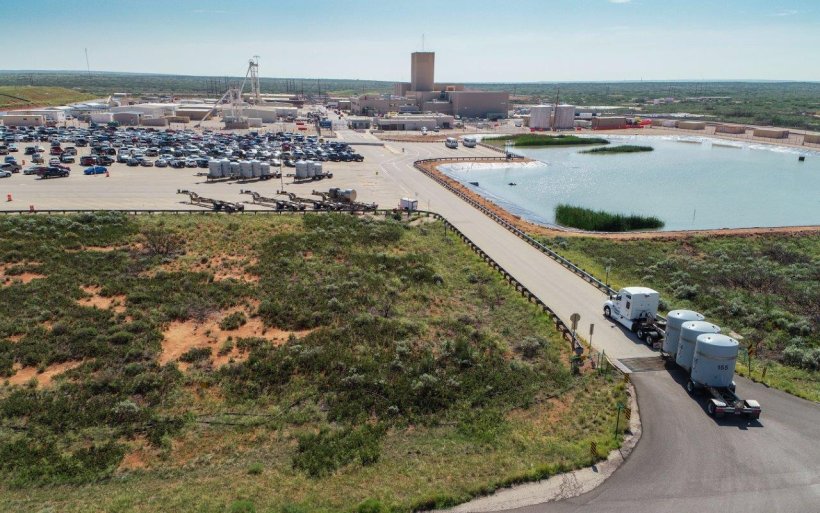Underground infrastructure overhaul planned for Waste Isolation Pilot Plant in Carlsbad, N.M.
CARLSBAD, N.M. (UI) — A critical piece of underground infrastructure at the U.S. Department of Energy Office of Environmental Management’s (EM) Waste Isolation Pilot Plant (WIPP) is about to get a makeover.

A mammoth-sized, steel-framed bin, known as the “salt pocket,” will undergo a much-needed overhaul starting this summer.
This work is part of EM’s ongoing effort to upgrade WIPP’s infrastructure to ensure the facility remains ready to support its vital national security and environmental cleanup missions.
WIPP, the nation’s only repository for defense-related transuranic waste, emplaces waste 2,150 feet underground in rooms mined from a thick layer of salt. Transuranic waste is comprised of debris, residues, soil, and other items contaminated with radioactive elements — largely plutonium — that have atomic numbers greater than uranium.
The underground salt pocket is used to stage mined salt before it’s safely lifted to the surface via a salt hoist.
“The salt pocket is critical to our continued success as we safely dispose of the nation’s defense-related transuranic waste,” said EM Carlsbad Field Office Manager Mark Bollinger. “Investing in this project will ensure we maintain our capability to efficiently stage mined salt until it’s ready to be removed from the underground repository.”
A deep dive into the salt pocket
In the mine, salt is offloaded 8 tons at a time into the salt pocket. The pocket, which extends approximately 55 feet below the depth of the salt hoist station, is supported by a steel framework that includes a measuring flask and gate for batching salt into an 8-ton skip to be hoisted. The skip, a vertical metal box with a bottom door dump, rides to the surface on guides, where it is dumped into 40-ton haul trucks and taken to WIPP’s salt stockpiles.
EM relies on the salt hoist to remove salt from the WIPP underground. While salt can be temporarily stockpiled in the mine’s drifts, or passageways, “skipping” it to the surface immediately is the preferred method.
Salado Isolation Mining Contractors, WIPP’s management and operations contractor, selected Cementation, a global mine contracting company with a United States office in Salt Lake City, Utah, to perform the work. The project is expected to finish this year.
The work includes demolishing the existing loading pocket and structural steel, remining and supporting the ground, and constructing an entirely new loading pocket, inclusive of new skip guides at the mine level.
Lithostatic pressure in the underground
WIPP’s mine is located in an underground salt layer so that emplaced waste can be encased over time by the salt, which moves, or creeps, at a rate of 2 to 6 inches per year.
This same salt creep also eventually squeezes manmade structures — known a lithostatic pressure — in the underground repository, such as the structural steel supporting the salt pocket.
It’s because of this pressure on the structure — combined with 25-plus years of service — that WIPP’s salt pocket needs to be refurbished.
Located in Southeast New Mexico about 26 miles east of Carlsbad, WIPP was constructed in the 1980s for disposal of defense-generated transuranic waste. The repository is carved out of a 2,000-foot-thick salt bed formed 250 million years ago. Transuranic waste is disposed of 2,150 feet underground in rooms mined from the salt bed.
Related News
From Archive

- DeLa Express seeks FERC approval for Permian-to-Louisiana gas pipeline project
- OSHA penalizes Houston contractor over safety violations resulting in worker's death
- Fiber infrastructure has no known expiration date, Fiber Broadband Association research concludes
- Nevada OSHA fines Elon Musk's Boring Company over safety violations in Vegas tunnel project
- Damage prevention and safety: Turning awareness into action



Comments